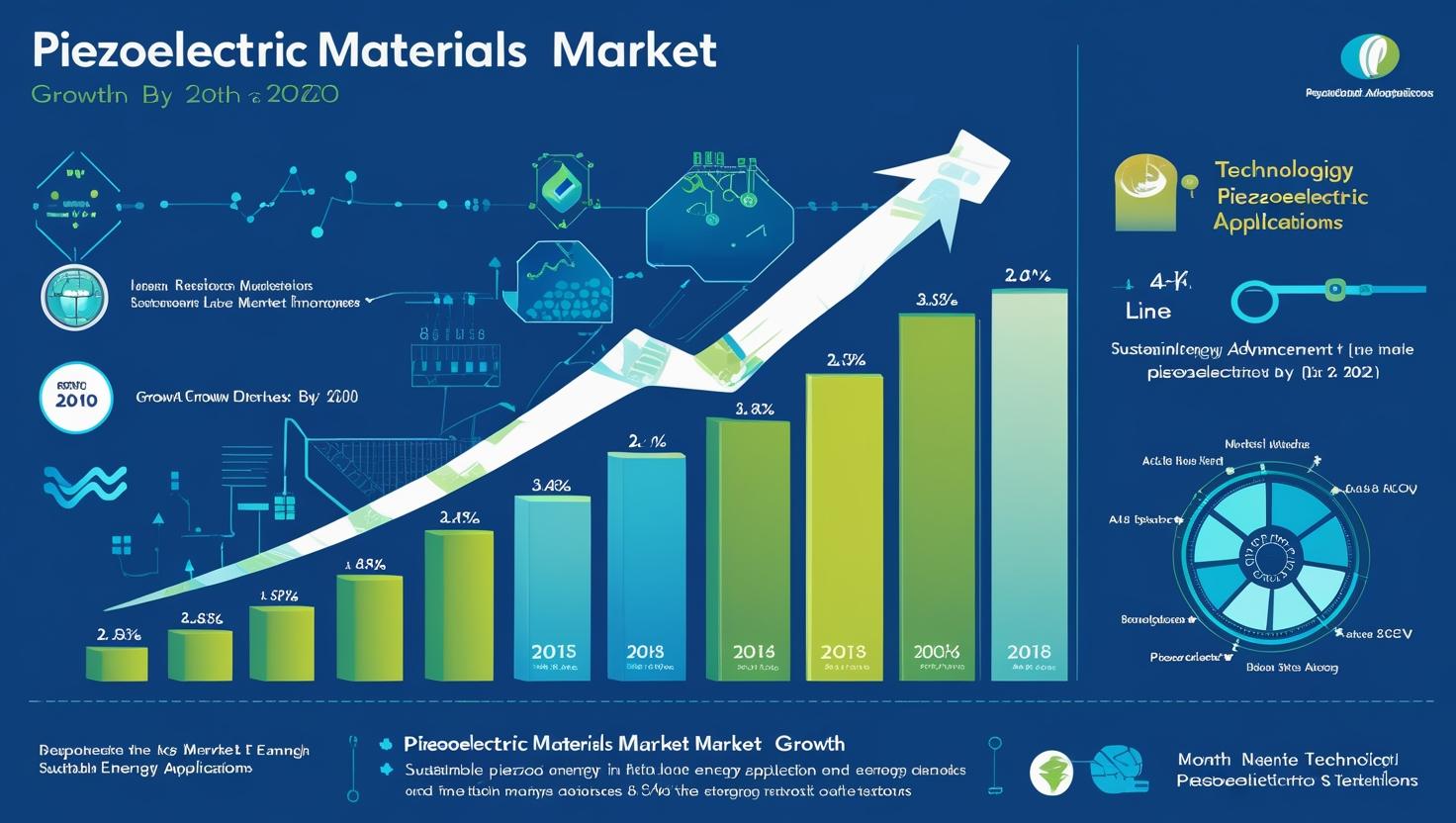The piezoelectric materials market is steadily emerging as a pivotal segment of the global advanced materials industry. Known for their ability to convert mechanical stress into electrical signals and vice versa, piezoelectric materials have unlocked immense potential across sectors like electronics, automotive, healthcare, energy, and aerospace. As industries continue to embrace smart technologies, the demand for highly sensitive sensors, precision actuators, and energy-efficient devices is driving renewed focus on piezoelectric materials.
This article explores how piezoelectric materials are shaping the future of technology, their applications in next-generation sensors and actuators, market growth drivers, and the innovations that are setting the stage for their expansion.
Understanding Piezoelectric Materials
Piezoelectricity refers to the ability of certain materials to generate an electric charge in response to applied mechanical stress. Conversely, they can deform mechanically when subjected to an electric field. This dual property makes them uniquely suitable for a wide range of electromechanical applications.
Common piezoelectric materials include:
-
Quartz crystals
-
Lead zirconate titanate (PZT)
-
Barium titanate
-
Zinc oxide
-
Polyvinylidene fluoride (PVDF)
These materials form the backbone of many modern technologies—particularly where sensitivity, precision, and efficiency are essential.
Key Market Drivers
The global piezoelectric devices market is expected to grow from USD 35.59 billion in 2024 to USD 55.49 billion by 2030 at a CAGR of 7.7% during the estimated period 2024-2030. One of the biggest factors propelling the piezoelectric materials market is the surge in demand for sensors and actuators in smart technologies. As industries move toward automation and digitalization, the need for precise, compact, and energy-efficient components has never been higher.
Download PDF Brochure @ https://www.marketsandmarkets.com/pdfdownloadNew.asp?id=256019882

In the healthcare sector, piezoelectric materials are enabling innovations in diagnostic equipment, ultrasonic imaging, and minimally invasive surgical tools. Similarly, the automotive sector is leveraging piezoelectric sensors for airbag deployment systems, engine knock sensors, and electric vehicle components.
Energy harvesting is another critical area of growth. With rising interest in renewable energy solutions and self-powered IoT devices, piezoelectric materials are being explored to convert ambient vibrations into usable electrical energy, making smart devices more sustainable and reducing dependency on traditional battery power.
Piezoelectric Sensors: Shaping the Smart Future
The integration of piezoelectric materials in sensor technology is driving a revolution in how machines interact with their environments. These sensors are crucial for monitoring vibrations, detecting pressure changes, and ensuring optimal performance in industrial automation systems. With the growth of Industry 4.0 and Industrial IoT (IIoT), demand for piezoelectric sensors is expected to accelerate rapidly.
In automotive manufacturing, for example, piezoelectric sensors contribute to vehicle safety systems, vibration monitoring, and predictive maintenance, enabling more reliable and efficient operations.
Precision Actuation: Enabling Robotics and Microdevices
Piezoelectric actuators, known for their high precision and responsiveness, are increasingly used in robotics, aerospace, and semiconductor manufacturing. They allow for extremely fine movements, which is essential in applications like medical devices, precision optics, and nano-positioning systems.
In advanced robotics, especially collaborative robots (cobots), piezoelectric actuators enable delicate tasks, ensuring accuracy in environments where robots work closely alongside humans.
Technological Advancements and Material Innovations
Ongoing research into lead-free piezoelectric materials is gaining momentum due to environmental concerns associated with traditional lead-based ceramics. Materials such as barium titanate and potassium sodium niobate (KNN) are emerging as promising alternatives, driven by regulatory frameworks focused on sustainability.
Additionally, innovations in flexible and printed piezoelectric materials are expanding possibilities in wearable electronics, flexible medical sensors, and smart textiles. These innovations are pushing the boundaries of where piezoelectric technology can be integrated.
Regional Market Insights
Asia-Pacific currently leads the piezoelectric materials market, driven by robust electronics manufacturing in countries like China, Japan, and South Korea. North America and Europe follow, supported by advancements in healthcare technology, automotive innovation, and increased focus on energy-efficient solutions.
Government initiatives promoting renewable energy and smart infrastructure in these regions are expected to further support market expansion in the coming years.
Future Outlook
The future of the piezoelectric materials market is intertwined with the advancement of smart technologies, sustainable manufacturing, and automation trends. As industries push for miniaturization, improved performance, and lower energy consumption, piezoelectric materials will remain central to driving innovation.
With continued R&D investments and the adoption of environmentally friendly alternatives, the piezoelectric materials market is poised for sustained growth, empowering the next wave of technological advancement in sensors, actuators, and beyond.
As the world moves toward smarter, more connected, and energy-conscious systems, piezoelectric materials will be at the core of this transformation. By enabling smarter sensors and precision actuators, they are not just supporting technological advancement—they are powering it.
Businesses that align their strategies with this trend stand to benefit significantly in the evolving global electronics and industrial landscape.
Frequently Asked Questions (FAQ): Piezoelectric Materials Market
1. What are piezoelectric materials?
Piezoelectric materials generate electric charge when subjected to mechanical stress and can also deform mechanically when exposed to an electric field. They are commonly used in sensors, actuators, and energy-harvesting devices.
2. Which industries use piezoelectric materials the most?
Piezoelectric materials are widely used in electronics, automotive, healthcare, aerospace, energy harvesting, and industrial automation sectors.
3. Why is the demand for piezoelectric materials growing?
The increasing need for precision sensors and actuators in smart devices, electric vehicles, medical equipment, and renewable energy systems is driving market growth. Additionally, innovations in flexible and lead-free piezoelectric materials are opening new application areas.
4. What is the role of piezoelectric materials in energy harvesting?
Piezoelectric materials can convert mechanical vibrations and pressure into electrical energy, making them ideal for self-powered IoT devices, sensors in remote locations, and other sustainable technology applications.
